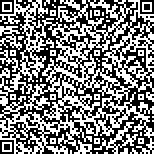下载中心
优秀审稿专家
优秀论文
相关链接
摘要

为降低高光谱遥感数据光谱空间的冗余度,提出一种快速的波段选择方法。该方法在波段子空间下进行,依次选择各子空间中方差最大的波段作为初始波段,设定目标函数,然后逐子空间替换波段使得目标性能更加优化,直至没有替换可以使得目标更优为止。在两个公开高光谱影像数据集上对比3种常用波段选择方法(ABC、AP、ABS)来验证提出方法的有效性,实验结果表明:(1)在印第安纳数据上,本文方法与ABC、AP、ABS所选波段子集相比平均相关性分别降低22.04%、52.61%、55.71%,最佳指数分别提高0.58%、51.73%、0.95%,总体分类精度分别提高0.16%、1.39%、23.07%,在搜索效率上与同类型的ABC方法相比提高6.61%—69.02%;(2)在帕维亚大学数据上,本文方法与ABC、AP、ABS所选波段子集相比平均相关性分别降低2.38%、0.51%、32.83%,最佳指数分别提高1.34%、17.97%、12.92%,总体分类精度分别提高0.31%、0.69%、8.53%,在搜索效率上与同类型的ABC方法相比提高19.13%—86.34%。本文提出的波段选择方法能够选择合适的波段子集满足不同的应用需要,是一种有效的波段选择方法。
Hyperspectral remote sensing data have a wealth of spectral information that can describe objects in detail. However, redundancy occurs due to the high correlation of adjacent bands in the narrow-band continuous spectrum space. This redundancy leads to high computational complexity and dimension disaster in data analysis. As an important means of dimension reduction, band selection can reduce these negative effects. The goal of band selection is to retain the relevant information needed in practical applications with as few bands as possible. Therefore, two aspects of discussion are involved:selection criteria and selection methods (search methods).
A new band search method based on band subspace is proposed to improve band searching efficiency. This method needs to input the required number of bands without any other parameter settings. First, the spectral space of hyperspectral data is partitioned according to the block characteristics of band correlation coefficient matrix image and the adjacent transitive correlation, which is partitioned as a first subspace. Then, on the basis of the actual demand band number, the first subspace is divided secondary according to the proportion of the subspace size, and the final band subspace is obtained. Second, a band is selected according to certain rules (e.g., the maximum standard deviation) in each final band subspace to form an initial band subset. Lastly, after the objective function (e.g., the average correlation of the band subsets, the best index, the overall classification accuracy) is set, bands are replaced by each subspace to increase (or decrease) the value of objective function until no replacement can improve the goal further, which is the final band subset we pursued.
The other three band selection methods are compared with our method on two opened hyperspectral data to verify the validity of the proposed method. Experimental results show that as a fast search strategy, the computational time of the proposed method is much less than the exhaustive band combination. The proposed method has faster search efficiency and convergence than the artificial bee colony algorithm for all kinds of objective functions. Moreover, compared with band selection method based on spectral clustering and adaptive band selection, this method can flexibly transform the target function for specific applications and obtain more suitable band subsets for different requirements.
The correlation of spectral space of hyperspectral data is flexibly used in this study. It substantially reduces the computational complexity of the search algorithm in the band selection that combined the subspace partition with band search. Moreover, few parameters are used to simplify the complexity of the model and reduce the time spent in parameter tuning. For different application requirements, the proposed method flexibly transforms the objective function so that the searched bands' combination becomes suitable for these requirements.

